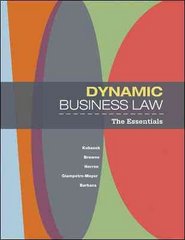Question
In this question, we are going dig deeper into the Taylor Rule and it variants (modifications). Federal Reserve data from October 1, 2011: Potential GDP
In this question, we are going dig deeper into the Taylor Rule and it variants (modifications).
Federal Reserve data from October 1, 2011:
Potential GDP growth y* = 1.1%
Actual GDP Growth yA= 1.6%
Inflation PCE (actual inflation) A= 2.7%
Effective Federal funds Rate = .07%
As Taylor assumed, we assume theequilibrium real rate of interest r* = 2%and theoptimal inflation rate, the target inflation rate * is also equal to 2%.
The standard (original) Taylor rule formula:
iffTR= r* + A+ 0.5[A- *] + 0.5 [ yA- y*]
a. Using the 'standard' Taylor rule from above and using the data provided, what is the federal funds rate implied by the 'standard' Taylor Rule?
b. According to the actual federal funds rate (use the Effective Federal Funds Rate provided above for 2011-10-01), is the Fed being hawkish or dovish?
c. Now consider the modified version of the Taylor using the unemployment gap instead of the GDP gap just like we did in the lectures. Also, we will use the PCE core rate of inflation instead of overall inflation like you used above - the Fed arguably cares more about core inflation than overall inflation.
Modified Taylor Rule formula:
iffTR= r* + A+ 0.5[A- *] + (-1.25) [URA- NAIRU]
Additional needed data from Federal Reserve data from October 1, 2011:
Unemployment RateURA= 8.6%
NAIRU= 5.15%
Inflation PCE Core (actual inflation) A= 1.9%
Now what is the federal funds rate implied by the modified Taylor Rule above?
d. According to the actual federal funds rate, is the Fed being hawkish or dovish?
Step by Step Solution
There are 3 Steps involved in it
Step: 1

Get Instant Access to Expert-Tailored Solutions
See step-by-step solutions with expert insights and AI powered tools for academic success
Step: 2

Step: 3

Ace Your Homework with AI
Get the answers you need in no time with our AI-driven, step-by-step assistance
Get Started


